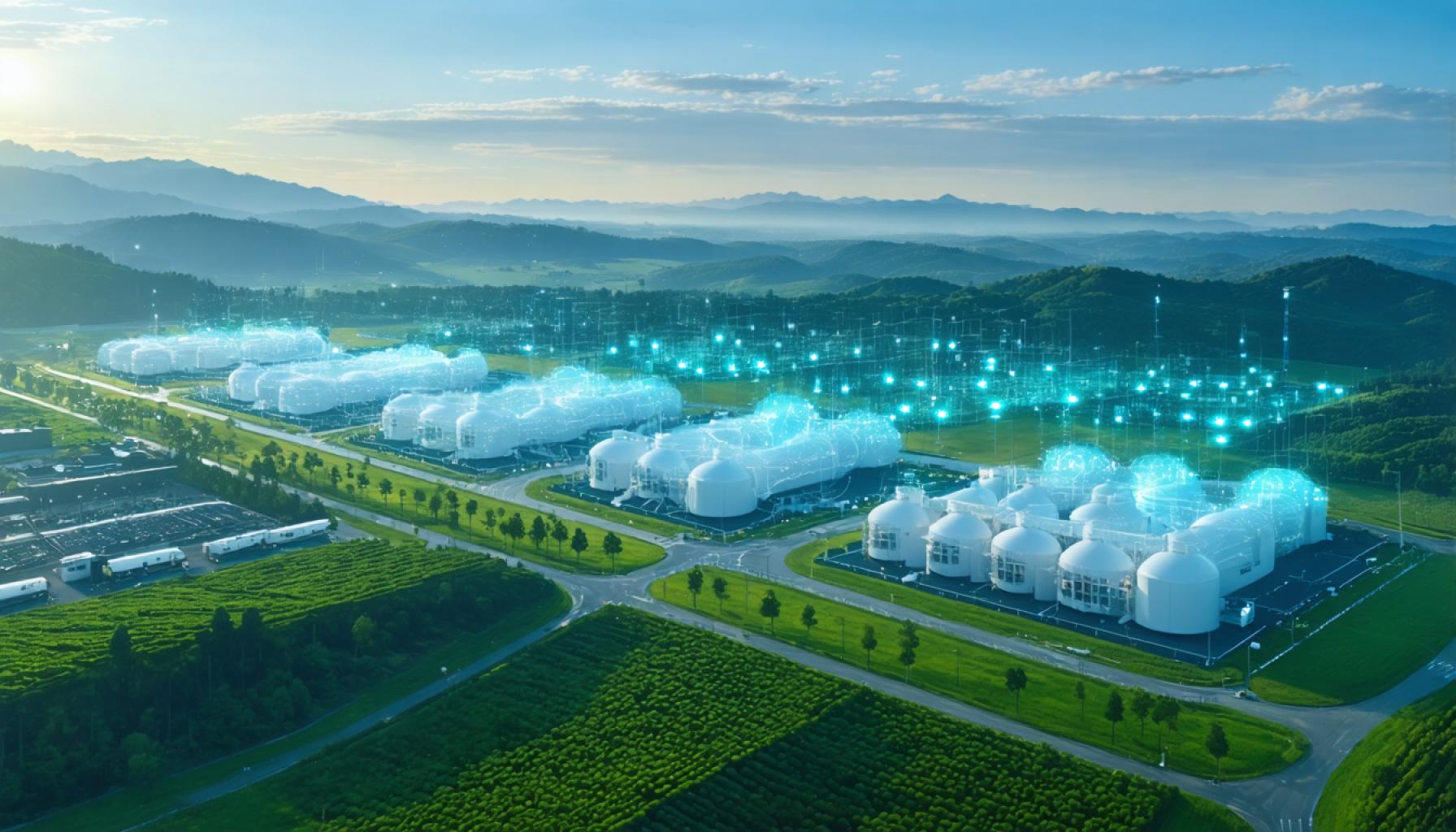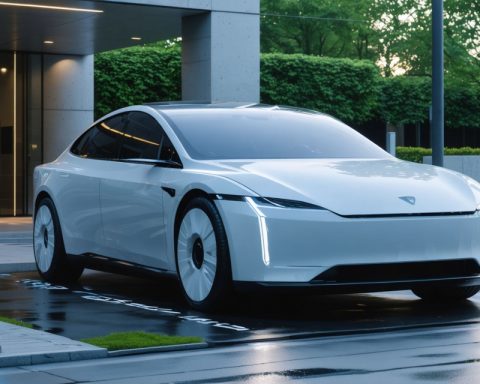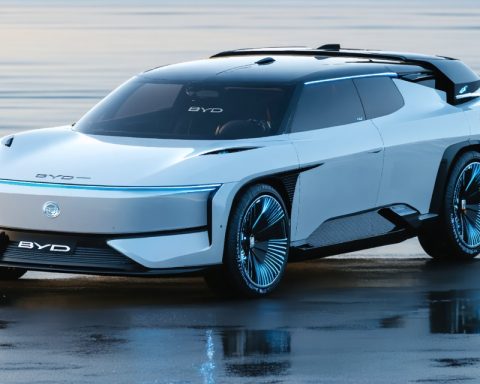- ECL, led by Yuval Bachar, aims to revolutionize data centers with hydrogen, reducing emissions and expediting construction.
- Located in Mountain View, California, ECL operates a 1-megawatt prototype, with ambitions for 1-gigawatt hydrogen sites in Texas.
- The tech industry’s power demand surges with AI advancements, underscoring the need for efficient energy solutions.
- ECL’s hydrogen model is swift and adaptable, offering immediate power solutions compared to traditional grid methods.
- Despite current hydrogen reliance on natural gas, ECL plans to transition to zero-carbon green hydrogen.
- Data centers may consume up to 12% of U.S. energy by 2028, making efficient energy innovation crucial.
- Hydrogen energy presents a sustainable path for tech giants seeking expansion and reduced carbon footprints.
In the tech world’s quest for cleaner energy, Yuval Bachar is steering the charge with his innovative startup, ECL. Nestled in Mountain View, California, ECL is set to revolutionize data centers by swapping carbon-heavy power for hydrogen. This shift promises more than just a reduction in emissions; it proposes a solution to a growing problem. As tech giants like Microsoft and Google push to broaden their technological horizons, hydrogen offers a lifeline, cutting the construction timeline of data centers in half compared to grid-reliant counterparts.
Imagine a bustling hub of cutting-edge technology, powered not by fossil fuels but by tanks of hydrogen whisked in by truck. While ECL currently boasts a modest 1-megawatt prototype facility, the company’s ambitions stretch beyond this diminutive site. Bachar dreams of sprawling, 1-gigawatt hydrogen-fueled sites in Texas, harnessing pipelines to achieve net-zero emissions.
The urgent need for power in the tech industry is palpable, especially since AI’s explosive debut with tools like ChatGPT. Companies are racing to upgrade, filling their data centers with energy-hungry GPUs. Yet, traditional grid solutions fall short, often unable to meet immediate power demands. This gap allows ECL, with its swift and flexible hydrogen model, to shine.
While Bachar acknowledges the allure of nuclear energy and the merits of solar and geothermal power, he underscores an immediate challenge: the need for immediate and scalable solutions. Hydrogen, despite its current reliance on natural gas, offers a bridge to the future, with plans to evolve toward zero-carbon green hydrogen.
As data center demands soar—projected to consume 6.7% to 12% of U.S. energy by 2028—every gigawatt saved is significant. Hydrogen not only extends a lifeline to tech behemoths desperate for expansion but also charts a path toward a sustainable future.
Revolutionizing Data Center Energy: The Hydrogen Advantage
Introduction
In today’s tech-driven world, the push for sustainable and clean energy solutions has never been more critical. Yuval Bachar’s ECL aims to lead this movement by integrating hydrogen power into data centers, offering a cleaner alternative that addresses immediate and future energy challenges. As companies like ECL pave the way for hydrogen-powered facilities, numerous facets, such as real-world applications, market trends, and potential obstacles, merit further exploration.
Real-World Use Cases
Hydrogen power promises to transform how data centers operate. This is particularly crucial as the demand for computing power surges with the advent of AI technologies. One practical use case involves quick deployment in remote areas where traditional grid networks are challenging to implement. Companies needing rapid scaling can greatly benefit from the flexible and fast-to-deploy nature of hydrogen power.
Market Forecasts & Industry Trends
The global hydrogen economy is projected to reach $201 billion by 2025, growing at a rate of 9% annually. This expansion is driven by increased investment in renewable energy sources and governmental pressures for carbon reduction. The data center industry specifically could save significant costs and expedite deployments by adopting hydrogen, positioning themselves at the forefront of the next energy transition.
Controversies & Limitations
Despite the potential benefits, hydrogen energy comes with controversies and limitations. Presently, most hydrogen production relies on natural gas, raising concerns about its net-green credentials. Moreover, issues related to storage, transportation, and safety due to hydrogen’s highly flammable nature must be adequately addressed.
Features, Specs & Pricing
While data on ECL’s technology is scant, general hydrogen systems for data centers offer high flexibility, scalability, and efficiency. Pricing varies significantly based on the infrastructure needed, particularly the costs associated with hydrogen extraction and storage technologies. With ongoing technological advancements, these costs are expected to decrease over time.
Pros & Cons Overview
Pros:
– Rapid Deployment: Hydrogen power stations can be deployed quicker than traditional grid-tied systems.
– Scalable: Hydrogen can be scaled up to meet the growing demands of data centers.
– Sustainability: Provides a cleaner energy option with potential for zero-carbon if green hydrogen technologies are adopted.
Cons:
– Current Production Methods: Predominantly relies on natural gas, not entirely carbon-neutral.
– Safety Concerns: Requires stringent measures for safe handling and storage.
– High Initial Costs: Infrastructure and technology for handling hydrogen can be expensive.
Actionable Recommendations
1. Innovate with Green Hydrogen: Companies should invest in technologies that bolster the transition to green hydrogen to enhance sustainability credentials.
2. Safety Protocols: Implement comprehensive safety protocols to mitigate the risks associated with hydrogen storage and transport.
3. Stay Informed: Keep abreast of emerging technologies and regulatory changes in the hydrogen sector to leverage opportunities.
Conclusion
Adopting hydrogen for data centers presents a transformative opportunity, both enhancing sustainability and meeting burgeoning energy demands. By addressing current challenges through innovation and strategic investment, the tech industry can achieve a more sustainable and efficient future.
For further insights on tech innovations, visit TechCrunch.














